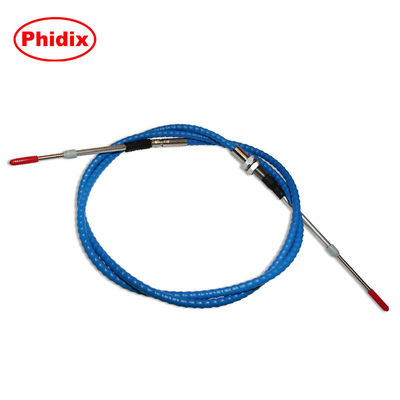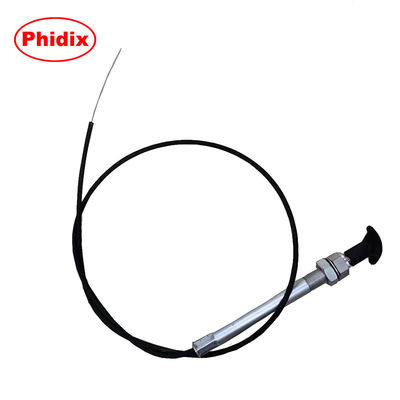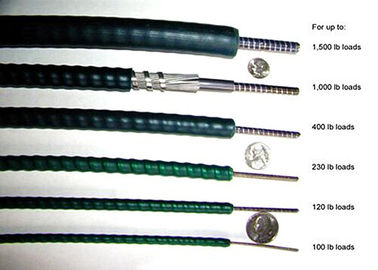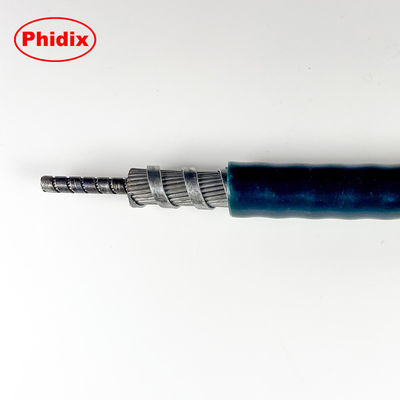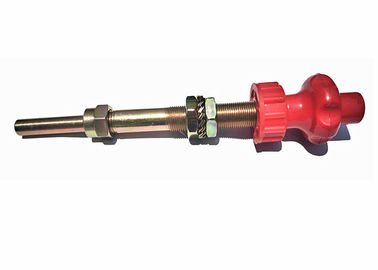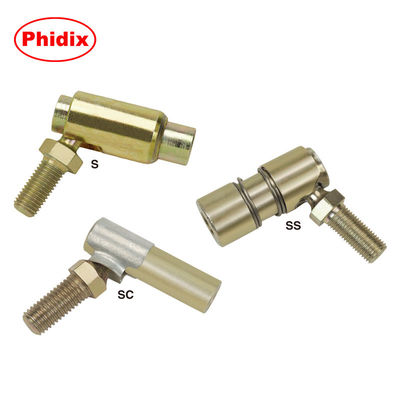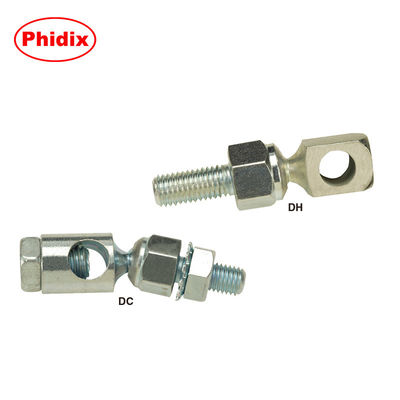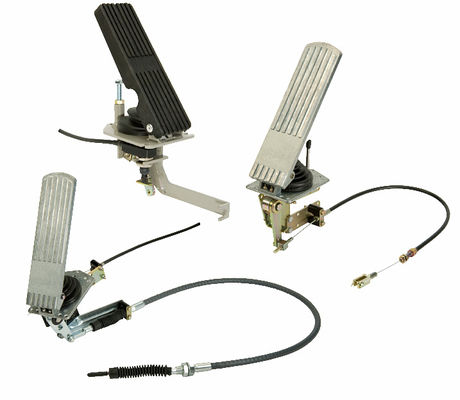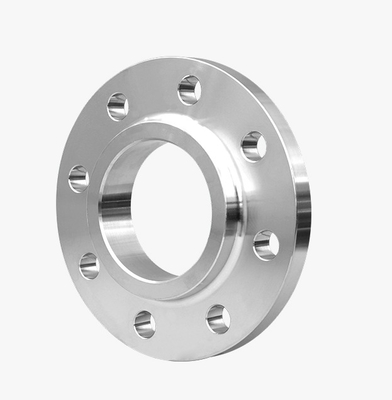تعتبر كابلات التحكم مكونات حيوية في العديد من الأنظمة الميكانيكية، بما في ذلك المركبات والمعدات الصناعية والسفن البحرية. تنقل هذه الكابلات الحركة والقوة للتحكم في وظائف مختلفة، مثل دواسة الوقود أو تغيير التروس. لضمان التشغيل السلس، من الضروري فحص كابلات التحكم وإعدادات سرعة التباطؤ وضبطها بانتظام. لا يؤدي الصيانة المناسبة إلى تحسين الأداء فحسب، بل يطيل أيضًا عمر المكونات.
1. فحص كابلات التحكم
تكون كابلات التحكم عرضة للتآكل بمرور الوقت، خاصة إذا تعرضت لظروف قاسية مثل الحرارة أو الرطوبة أو الأوساخ. يساعد الفحص المنتظم في تحديد أي مشكلات محتملة قبل أن تتسبب في مشاكل تشغيلية.
• الفحص البصري: ابدأ بالفحص البصري لكابل التحكم. تحقق من وجود علامات تآكل واضحة، مثل الاهتراء أو الالتواءات أو الشقوق في الغلاف الخارجي. يمكن أن تؤدي هذه المشكلات إلى تعطل الكابل أو انخفاض الأداء. انتبه جيدًا إلى المناطق التي يمر فيها الكابل عبر مساحات ضيقة أو بالقرب من الحواف الحادة، لأن هذه هي الأماكن الشائعة للتلف.
• التحقق من الحركة السلسة: مع إيقاف تشغيل السيارة أو المعدات، اسحب كابل التحكم وادفعه يدويًا من كلا الطرفين. يجب أن يتحرك الكابل بسلاسة ودون مقاومة. إذا لاحظت أي تصلب أو ربط أو حركات متشنجة، فقد يكون الكابل قد تآكل أو يحتاج إلى تزييت.
• شد الكابل: تحتاج كابلات التحكم إلى الحفاظ على الشد المناسب لتحقيق الأداء الأمثل. إذا كان الكابل مشدودًا جدًا أو مرتخيًا جدًا، فقد يتسبب في خلل وظيفي. تحقق من الشد عند مقبض التحكم أو نهاية المشغل، وقم بضبطه حسب الحاجة.
2. ضبط سرعة التباطؤ
تشير سرعة التباطؤ إلى الحد الأدنى لسرعة المحرك عندما يكون قيد التشغيل ولكن ليس تحت الحمل. يعد ضمان سرعة التباطؤ الصحيحة أمرًا ضروريًا لأداء المحرك السلس وكفاءة استهلاك الوقود. يمكن أن تؤدي سرعة التباطؤ غير الصحيحة إلى توقف المحرك أو التباطؤ الخشن أو الإفراط في استهلاك الوقود.
• قم بتسخين المحرك: قبل ضبط سرعة التباطؤ، اترك المحرك يسخن لبضع دقائق. يضمن ذلك وصول المحرك إلى درجة حرارة تشغيل مستقرة، وهو أمر ضروري لإجراء تعديلات دقيقة.
• حدد موقع برغي ضبط التباطؤ: في معظم المحركات، يمكن ضبط سرعة التباطؤ عن طريق تدوير برغي موجود على جسم الخانق أو المكربن. يتحكم هذا البرغي في تدفق الهواء إلى المحرك في حالة التباطؤ. ارجع إلى دليل الشركة المصنعة للحصول على الموقع الدقيق وإجراءات الضبط.
• ضبط سرعة التباطؤ: ابدأ تشغيل المحرك واتركه في حالة التباطؤ. باستخدام مفك البراغي، أدر برغي ضبط التباطؤ في اتجاه عقارب الساعة لزيادة سرعة التباطؤ، أو عكس اتجاه عقارب الساعة لتقليله. قم بإجراء تعديلات صغيرة، مع التحقق من استجابة المحرك بعد كل دورة. تختلف سرعة التباطؤ المثالية اعتمادًا على نوع المحرك، لذا ارجع إلى المواصفات المقدمة من الشركة المصنعة.
• اختبار الاستقرار: بعد ضبط سرعة التباطؤ، اختبر استقرار تباطؤ المحرك. يجب أن يحافظ المحرك على تباطؤ ثابت دون تقلب أو توقف. إذا استمر المحرك في التوقف أو كان لديه تباطؤ خشن، فقد تكون هناك حاجة إلى مزيد من التعديلات أو الصيانة الأخرى (مثل تنظيف المكربن أو استبدال فلتر الهواء).
3. الفحوصات النهائية والتزييت
بمجرد ضبط كابل التحكم وسرعة التباطؤ، قم بإجراء فحص نهائي للتأكد من أن كل شيء يعمل بشكل صحيح.
• تزييت كابل التحكم: إذا كان كابل التحكم لا يتحرك بسلاسة، ضع كمية صغيرة من مادة التشحيم لتقليل الاحتكاك وتحسين الحركة. تأكد من استخدام مادة تشحيم مناسبة لمادة الكابل وما يحيط به.
• اختبار النظام: أخيرًا، اختبر النظام بأكمله للتأكد من نجاح التعديلات. قم بتشغيل دواسة الوقود أو أدوات التحكم الأخرى للتأكد من أن الكابل يستجيب بشكل صحيح، وأن المحرك يتباطأ بسلاسة.
الخلاصة
يعد الفحص المنتظم لكابلات التحكم وسرعة التباطؤ وضبطها أمرًا ضروريًا للحفاظ على الأداء الأمثل في الأنظمة الميكانيكية. من خلال إجراء هذه الفحوصات البسيطة، يمكنك منع الإصلاحات المكلفة، وتحسين كفاءة معداتك، وإطالة عمر المكونات الرئيسية. اتبع دائمًا إرشادات الشركة المصنعة للإجراءات المحددة، وعندما تكون في شك، استشر متخصصًا للحصول على مزيد من المشكلات المعقدة.

 يجب أن تكون رسالتك بين 20-3000 حرف!
يجب أن تكون رسالتك بين 20-3000 حرف! من فضلك تفقد بريدك الالكتروني!
من فضلك تفقد بريدك الالكتروني!  يجب أن تكون رسالتك بين 20-3000 حرف!
يجب أن تكون رسالتك بين 20-3000 حرف! من فضلك تفقد بريدك الالكتروني!
من فضلك تفقد بريدك الالكتروني! 
